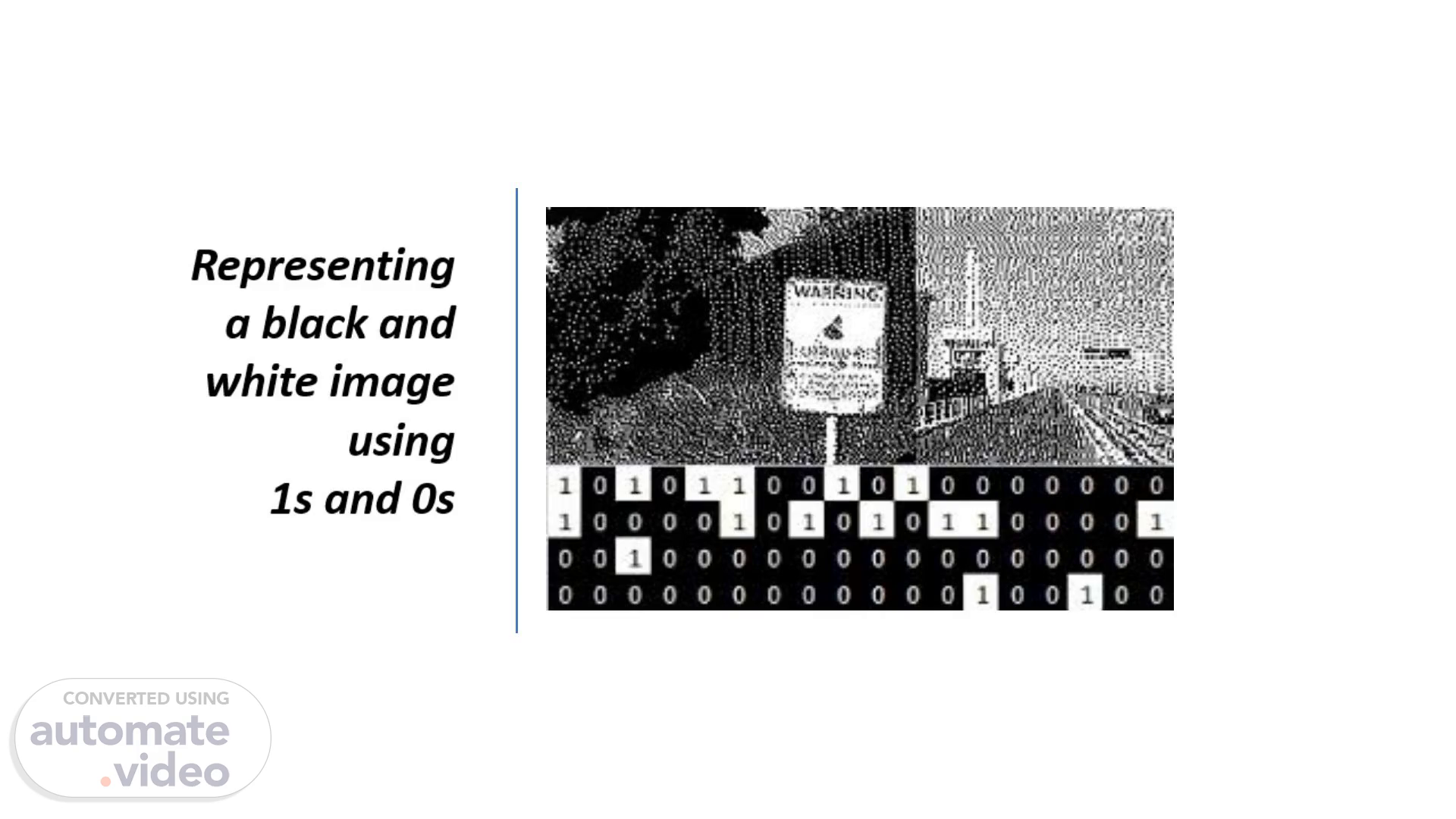Scene 1 (0s)
[Audio] Representing a black and white image using 1 seconds and 0s "Good morning, everyone! Today, we’re going to explore how computers represent images, specifically black-and-white images, using just two numbers: 1 and 0. Look at this picture. You can see that it’s been broken down into tiny squares, each filled with either black or white. These squares are called 'pixels,' which stands for 'picture elements.' When these pixels are placed together, they form an image, much like a mosaic. In a digital image, each pixel is assigned a binary value—either 1 or 0. Here, 1 represents a black pixel, and 0 represents a white pixel. By using only these two values, the computer can store information about each pixel in the image. Think of it like a code or a map for the picture. For example, if I have a line of pixels where the values are 1, 0, 1, 1, 0, that would mean black, white, black, black, white in terms of pixel color. Now, why do we use 1 seconds and 0s? Well, computers operate in binary, which is a base-2 system, meaning it only uses two symbols, 1 and 0. Binary data is what the computer understands best because it aligns with the on-off state of the computer’s electronic circuits. This way of storing images as a series of 1 seconds and 0 seconds is called 'bitmap representation.' It's a simple yet powerful way to save image data, and it's especially useful in cases where we don’t need color—like in certain types of scanners, printers, or early digital displays. Understanding binary representation is essential in computer science because it lays the groundwork for understanding how all types of data—not just images—are stored and processed by computers. Are there any questions so far?".
